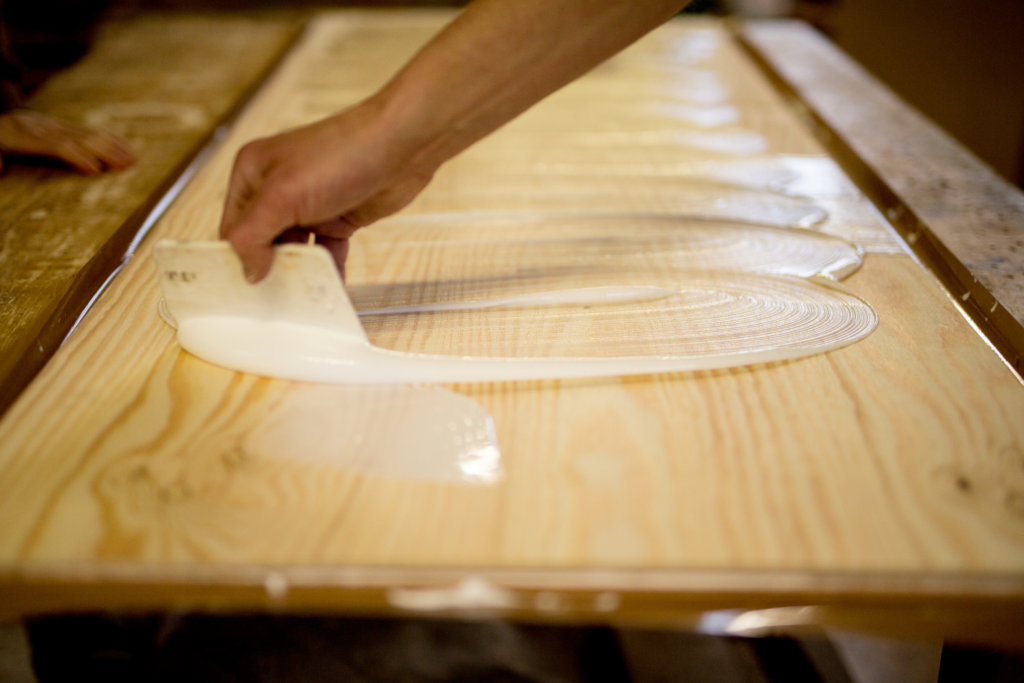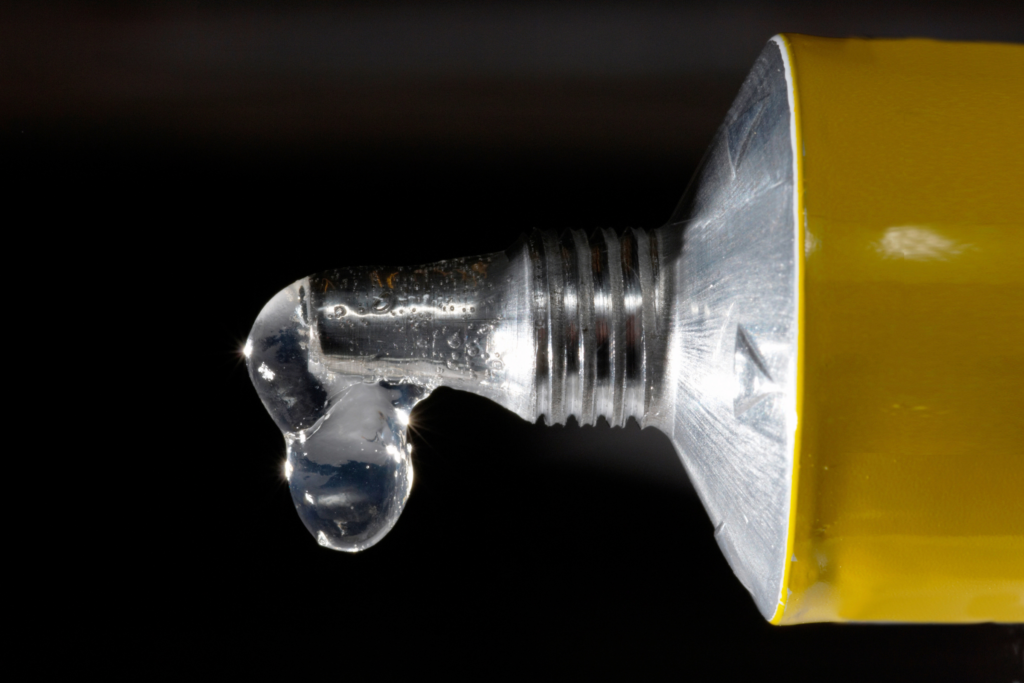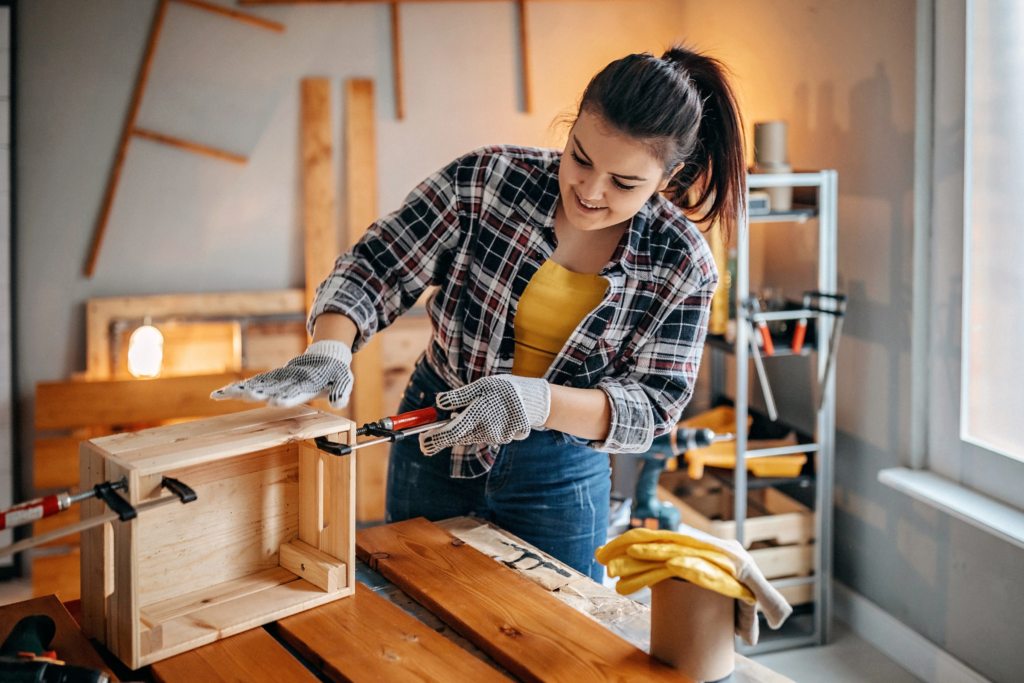Is Gorilla Glue Heat Resistant? (Comparison of Original, Wood, Super Glues, Gels)
When it comes to adhesives, you may find yourself wondering about their versatility and durability. One such example is Gorilla Glue, a popular polyurethane adhesive known for its impressive bonding capabilities. A commonly asked question about Gorilla Glue is how tough is it – can it withstand high temperatures without melting or losing its effectiveness?
Is Gorilla Glue heat resistant? Is Gorilla Super Glue heat resistant? What about the wood glue?
Gorilla Glue is fairly heat resistant after it has cured and dried but isn’t designed to be used at extreme temperatures. Original Gorilla Glue products can withstand up to 200° F, Gorilla Super Glue products can withstand up to 220° F, and Gorilla Wood Glue can resist temperatures up to 150° F.
In the case of Gorilla Glue, it’s a reliable option for tasks that do not involve exposure to extreme temperatures. Let’s take a closer look at the heat resistance of various Gorilla Glue products, along with how they are made and other factors to consider when using the glue.
What Is Gorilla Glue
Gorilla Glue is a well-known and powerful adhesive that provides a strong bond for various projects. The glue comes in different types, including the original Gorilla Glue, Gorilla Super Glue, and Gorilla Wood Glue. Known for its strength and versatility, Gorilla Glue can bond various materials such as wood, ceramic, metal, and even plastic.
Designed to be waterproof and durable, this adhesive makes it ideal for a wide range of indoor and outdoor projects. It has impressive adhesive properties that ensure your projects will last in rain, snow, or whatever conditions they may encounter.
Gorilla Super Glue, one of its popular variants, is known for its quick bond and strength. The special formula allows it to bond in just a few seconds, making it perfect for those projects that require an instant grab. With Gorilla Super Glue, you can work on materials like metal, rubber, or porcelain without issues.
Is Gorilla Glue heat resistant? Comparing temperatures for all Gorilla Glues
| Type of Gorilla Glue | Application Temperature | Service Temperature (Min/Max) |
|---|---|---|
| Original Gorilla Glue | Above 40 F, best at room temperature | -40° to 200° F |
| White Gorilla Glue | Above 40° F, best at room temperature | -40° to 200° F |
| Clear Gorilla Glue | 32° to 100° F, best at room temperature | -20° to 180° F |
| Gorilla Super Glue | Room temperature | -65° to 220° F |
| Gorilla Super Glue Gel | Room temperature | -65° to 220° F |
| Gorilla Wood Glue | 55° to 75° F, best at room temperature | 0° to 150° F |
Heat resistance of Original Gorilla Glue
Original Gorilla Glue has a maximum heat resistance of 200° F, a minimum temperature recommendation of -40° F, and should be applied at a temperature above 40 F (best at room temperature).

Heat resistance of White Gorilla Glue
White Gorilla Glue has a maximum heat resistance of 200° F, a minimum temperature recommendation of -40° F, and should be applied at a temperature above 40 F (best at room temperature).

Heat resistance of Clear Gorilla Glue
Clear Gorilla Glue has a maximum heat resistance of 180° F, a minimum temperature recommendation of -20° F, and should be applied at a temperature between 32° to 100° F (best at room temperature).

Heat resistance of Gorilla Super Glue
Gorilla Super Glue has a maximum heat resistance of 220° F, a minimum temperature recommendation of -65° F, and should be applied at room temperature.

Heat resistance of Gorilla Super Glue Gel
Gorilla Super Glue Gel has a maximum heat resistance of 220° F, a minimum temperature recommendation of -65° F, and should be applied at room temperature.

Heat resistance of Gorilla Wood Glue
Gorilla Wood Glue has a maximum heat resistance of 150° F, a minimum temperature recommendation of 0° F, and should be applied at a temperature between 55° to 75° F (best at room temperature).

What is Gorilla Glue made of?
Gorilla Glue is a versatile adhesive product that comes in various types specifically designed for different purposes. To better understand its heat resistance properties, let’s delve into the composition of its different types.
Original Gorilla Glue
The original Gorilla Glue is a polyurethane-based adhesive. Water-activated, it expands and forms an incredibly strong bond between various materials such as wood, stone, and metal.
Polyurethane adhesives are known for their toughness, durability, and ability to withstand heat. Original Gorilla Glue can retain its adhesive properties at temperatures up to about 200° F, and its thermosetting nature makes it heat resistant to a certain extent.
Gorilla Super Glues
Gorilla Super Glue features a cyanoacrylate adhesive, which is a rapid-setting and strong bonding polymer.
This type of glue works well on a range of materials, from plastic to metal to ceramics. Gorilla Super Glue’s heat resistance is slightly lower than the polyurethane version, tolerating temperatures up to about 220° F.
Gorilla Wood Glues
As the name suggests, Gorilla Wood Glue is specifically formulated for bonding wood. This adhesive is a PVA (polyvinyl acetate) type, which provides a strong bond and is known for its ease of use.
While it holds up to some heat (150° F), wood glue is generally not as heat resistant as other types of Gorilla Glue.
Gorilla Super Glue Gel and Clear Gorilla Glue
Gorilla Super Glue Gel is a thicker version of the cyanoacrylate adhesive, making it better suited for vertical applications or surfaces requiring more precise application. Clear Gorilla Glue, on the other hand, offers the strength of the original polyurethane formula in a non-foaming, transparent adhesive.
Both of these types share similar heat resistance properties to their respective counterparts – the Gorilla Super Glue Gel with cyanoacrylate adhesive and Clear Gorilla Glue with polyurethane adhesive.
How heat resistance affects Gorilla Glue products
It is important to consider factors that may affect the heat resistance of Gorilla Glue:
- Chemical Composition: The glue’s composition plays a significant role in its ability to tolerate heat.
- Curing Process: Proper curing is essential to ensure maximum heat resistance.
- Application Method: Applying the glue correctly can impact its heat resistance.
- Surface Preparation: Thoroughly cleaning and preparing surfaces for bonding contributes to the glue’s heat resistance.
- Bond Thickness: Maintaining an appropriate bond thickness helps in maintaining heat resistance.
- Environmental Factors: External factors like humidity and air temperature can affect the glue’s heat resistance.
In summary, Gorilla Glue is a reliable option for projects requiring heat-resistant adhesive. However, it’s essential to consider the specific type of Gorilla Glue and follow the proper curing process and application method to ensure optimal performance in high-temperature situations.

How does Gorilla Glue stick to different materials?
Gorilla Glue is known for its strong bonding capabilities and heat resistance, making it suitable for a variety of materials.
Let’s explore how the glue performs on different types of materials:
Wood: Gorilla Glue bonds well with wood, creating a strong and durable bond that can withstand heat. This makes it ideal for woodworking projects, furniture repairs, and outdoor applications.
Plastic: The adhesive works well with a wide range of plastic materials, including ABS, polystyrene, and PVC. However, it may not adhere well to polyethylene and polypropylene, which are low-surface-energy plastics.
Metal: Gorilla Glue can bond metals effectively, such as aluminum, brass, and steel. The bond it forms can resist heat to some extent, but in extremely high temperatures, the bond may weaken.
Rubber: This adhesive is suitable for bonding rubber materials, creating a flexible yet strong bond that can resist heat, making it great for sealing and repairing items like tires and rubber mats.
Ceramic: Gorilla Glue can bond most ceramic materials effectively, fixing broken pottery or attaching ceramic tiles. The bond is heat-resistant but may not be suitable for high-heat applications like baking dishes.
Glass: The adhesive can bond glass surfaces well, forming a clear bond that can resist heat. However, it is not recommended for use on glassware that would be exposed to extreme heat, like oven dishes or cookware.
Vinyl: Gorilla Glue works effectively on vinyl materials, such as flooring, upholstery, and outdoor coverings. The bond is heat-resistant, making it suitable for hot environments.
When working with Gorilla Glue, it’s essential to follow the manufacturer’s instructions and prepare the surfaces correctly. This will ensure a strong and lasting bond that can resist heat and other environmental factors. If unsure about the suitability of Gorilla Glue for a specific material or application, it’s always best to perform a small test before committing to a project.

What is the curing process of Gorilla Glue?
The curing process of Gorilla Glue plays a crucial role in determining its heat resistance. As a polyurethane adhesive, Gorilla Glue requires moisture to cure properly.
The ideal moisture content for the best results ranges from 10% to 25%. If the moisture content is below 10%, you should apply water to the non-glue surface before adhering.
When it comes to curing time, Gorilla Glue takes approximately 1-2 hours to cure up to 80%, while fully curing takes about 24 hours. The optimal temperature range for the curing process is between 68° and 130°F. At temperatures below 40°F and above 200°F, Gorilla Glue may experience some decline in its bonding strength.
Here’s a summary of some important factors affecting Gorilla Glue’s curing process:
- Moisture content: 10% to 25% (apply water to non-glue surface if below 10%)
- Curing time: 1-2 hours for 80% cure, 24 hours for full cure
- Temperature range: 68° to 130°F
During the curing process, it’s essential to avoid clamping the bonded surfaces as it may weaken the bond. Instead, you can apply even pressure using a heavy object or tape. The bond created by Gorilla Glue is highly elastic, providing excellent resistance to solvents, saltwater, UV light, and impact.
To ensure the best results when using Gorilla Glue, consider the following:
- Ensure that the surfaces are clean and dry.
- Apply a thin layer of glue to one surface.
- If necessary, apply water to the other surface if the moisture content is below 10%.
- Press the two surfaces together and maintain even pressure during the curing process.
- Allow at least 24 hours for the bond to fully cure.
By following these steps and keeping the mentioned factors in mind, you can ensure that your Gorilla Glue bond remains strong and resistant even when exposed to high temperatures.

Understanding the Risks and Precautions of Using Gorilla Glue
When using Gorilla Glue, safety is paramount. This powerful adhesive poses potential hazards, especially in heat-resistant applications.
Always work in well-ventilated areas, as the glue emits harmful fumes. Avoid inhalation and ensure air circulation in enclosed spaces. Remember, Gorilla Glue is combustible; keep it away from flames and store in a cool, shaded place.
Use gloves and safety glasses to guard against skin and eye irritation. If contact occurs, rinse immediately with soap and water.
While Gorilla Glue has some heat resistance, be cautious in high-temperature settings. Always consult the manufacturer’s guidelines to ensure proper application, curing, and safety.
Gorilla Glue and DIY Projects
When undertaking DIY tasks requiring heat-resistant adhesive, Gorilla Glue is a top pick. Its heat resilience makes it apt for diverse uses, from outdoor repairs—like mending furniture or garden ornaments—to indoor fixes, such as mending kitchenware or sealing heating vents. It’s also great for craft projects involving heat-sensitive materials like wood or ceramics.
To use Gorilla Glue effectively:
- Ensure surfaces are clean and dry.
- Apply a thin layer to one surface and press together.
- For stronger bonds, clamp while drying.
- Always seal the bottle after use.
With Gorilla Glue, you get a dependable adhesive suitable for both internal and external DIY projects, guaranteeing a robust bond even in heated conditions.

Alternatives to Gorilla Glue
If you’re looking for an alternative to Gorilla Glue that can better withstand heat, there are several options available. Each adhesive has its own strengths and weaknesses, so it’s important to choose the right one for your specific needs.
Hot glue is a popular choice due to its versatility and ease of use. It offers a strong bond and can be used on a variety of materials. However, it may not hold up well under extreme heat, so it might not be the best option for projects that will be exposed to high temperatures.
Silicone is another option for heat-resistant projects. It is widely used by professionals and offers a permanent bond that can withstand temperatures up to 572°F (300°C). It is a versatile adhesive that works well with various materials, including metal, glass, and plastic.
Cyanoacrylate glue, commonly known as super glue, is heat resistant after fully cured and can withstand temperatures between 100°F-110°F (37°C-43°C). While it is not as heat-resistant as silicone, it still offers a strong bond and is suitable for many applications.
Epoxy adhesive is a two-part adhesive that provides a strong, durable bond resistant to heat, chemicals, and moisture. It can be used on a wide range of materials and is often the choice for professionals when a strong, permanent bond is needed.
When selecting an alternative adhesive, consider what your project requires. Is the adhesive heat-resistant? Will it create a permanent bond? Will it work with the materials you are using? Keep these questions in mind as you explore your options. Remember, it’s essential to choose the right adhesive for your specific needs to ensure the best results.
Let Us Know How We’re Doing!
Did this expertly prepared resource answer your question?
Do you have another question about home maintenance, home improvement projects, home appliance repair, or something else?
Get more information, send in questions and keep the discussion going by contacting the I’ll Just Fix It Myself company customer service team at at 1-800-928-1490 or Email us at [email protected]
